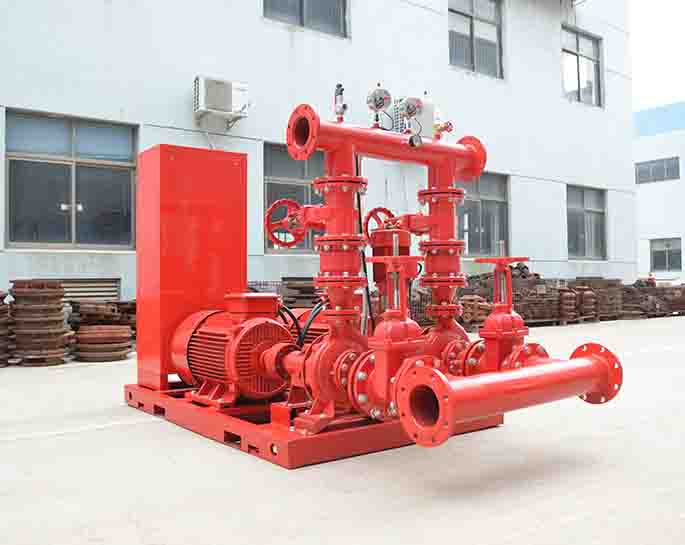The critical cavitation allowance of fire pumps and the use of plunger pumps
Mar 20, 2023
Share:
The critical cavitation allowance (CCA) of fire pumps is the maximum amount of pressure that a pump can withstand before experiencing severe damage due to cavitation. Cavitation occurs when a pump is operating at a pressure that is too high and causes bubbles to form in the liquid being pumped. These bubbles collapse and cause microscopic damage to the pump components.
The critical cavitation allowance of fire pumps is the minimum allowable pressure at which the pump will operate without cavitation. Cavitation is a phenomenon which occurs when the pressure of a liquid drops below its vapor pressure. This can cause damage to the pump components as well as reduce its efficiency. As a result, it is important to ensure the pressure of the liquid is kept above the critical cavitation allowance.
Plunger pumps are commonly used in fire pumps due to their ability to deliver a constant pressure regardless of the flow rate. This makes them ideal for applications where the flow rate can fluctuate. As such, plunger pumps are a good choice for fire pumps as they are able to provide the necessary critical cavitation allowance.
Plunger pumps are commonly used in fire pumps because they are able to withstand higher pressures than other types of pumps. Plunger pumps have a CCA of approximately 150 PSI, which is much higher than other pump types and allows them to be used in higher-pressure applications.
The critical cavitation allowance (CCA) for fire pumps and plunger pumps should be determined by the manufacturer. The CCA is the difference between the inlet pressure and the pressure at which cavitation occurs. It is important for fire pumps and plunger pumps to have sufficient CCA to ensure reliable operation and to prevent damage from cavitation.
Fire pumps require a minimum CCA of 15 psi and a maximum of 25 psi. Plunger pumps require a minimum CCA of 10 psi and a maximum of 40 psi.
The CCA should be determined based on the specific application requirements and the manufacturer’s recommendation. It is important to note that the CCA should never be exceeded as this can lead to cavitation and pump damage.

The critical cavitation allowance of fire pumps is the minimum allowable pressure at which the pump will operate without cavitation. Cavitation is a phenomenon which occurs when the pressure of a liquid drops below its vapor pressure. This can cause damage to the pump components as well as reduce its efficiency. As a result, it is important to ensure the pressure of the liquid is kept above the critical cavitation allowance.
Plunger pumps are commonly used in fire pumps due to their ability to deliver a constant pressure regardless of the flow rate. This makes them ideal for applications where the flow rate can fluctuate. As such, plunger pumps are a good choice for fire pumps as they are able to provide the necessary critical cavitation allowance.
Plunger pumps are commonly used in fire pumps because they are able to withstand higher pressures than other types of pumps. Plunger pumps have a CCA of approximately 150 PSI, which is much higher than other pump types and allows them to be used in higher-pressure applications.
The critical cavitation allowance (CCA) for fire pumps and plunger pumps should be determined by the manufacturer. The CCA is the difference between the inlet pressure and the pressure at which cavitation occurs. It is important for fire pumps and plunger pumps to have sufficient CCA to ensure reliable operation and to prevent damage from cavitation.
Fire pumps require a minimum CCA of 15 psi and a maximum of 25 psi. Plunger pumps require a minimum CCA of 10 psi and a maximum of 40 psi.
The CCA should be determined based on the specific application requirements and the manufacturer’s recommendation. It is important to note that the CCA should never be exceeded as this can lead to cavitation and pump damage.


.png)
.png)

.png)


